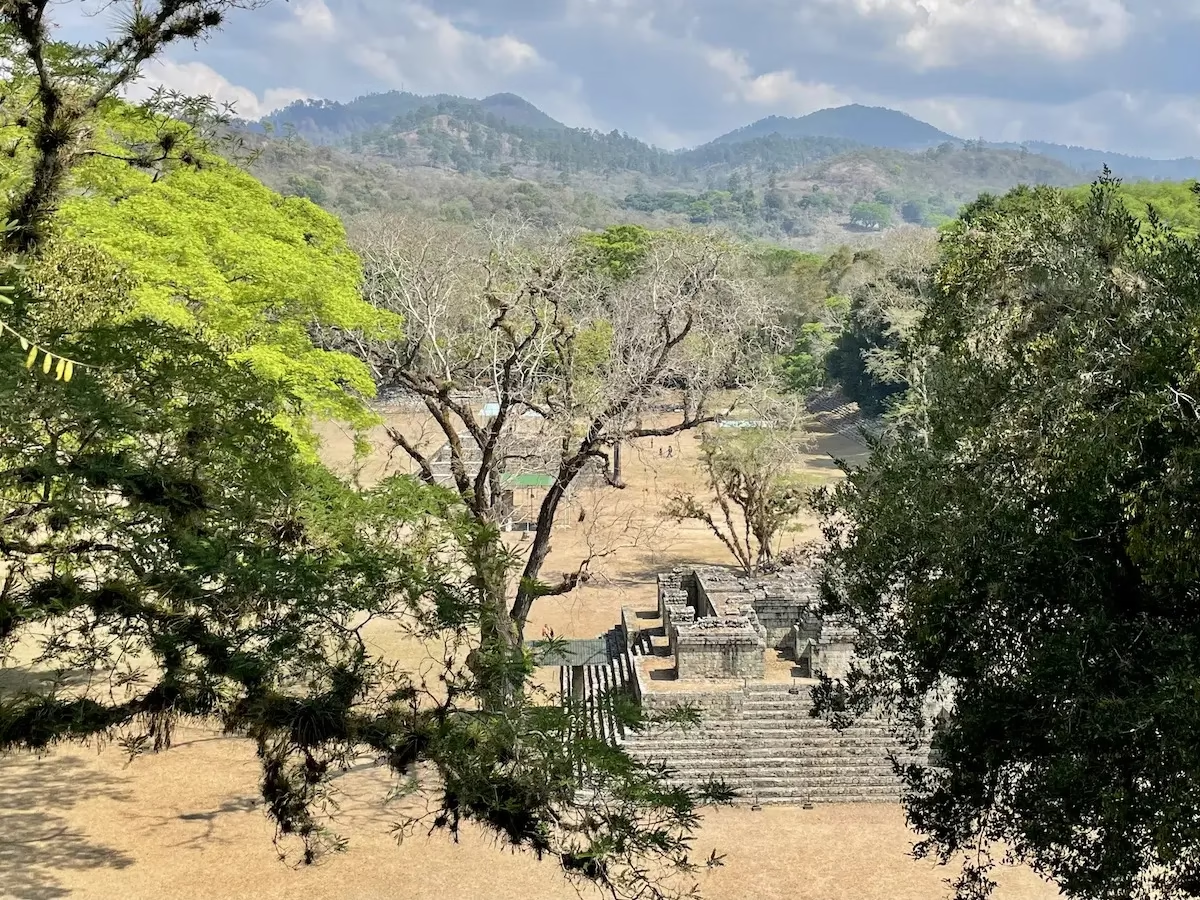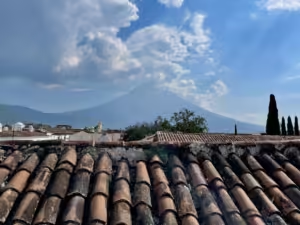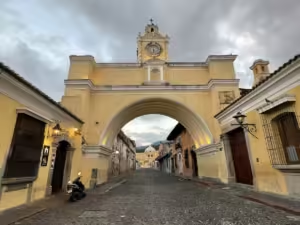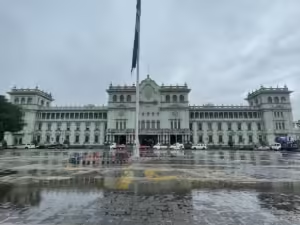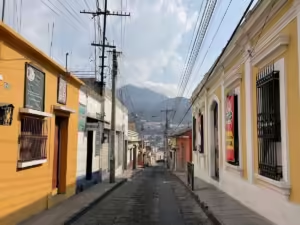When it comes to Mayan ruins, Tikal and Chichén Itza are usually the first that come to mind. They’re great, and you should go there, too. But there’s another set of equally impressive ancient Mayan buildings tucked away in a corner of Honduras: the magnificent ruins of Copán.
The pyramids here might not be as tall as they’re more famous rivals, but what Copán lacks in size it more than makes up for in intricate, gorgeous stone carvings and excellent on-site museum.
And there’s much more to Copán than just the ruins. The town of Copán Ruinas is a charming little mountain village. It’s friendly and not over-touristed. At the same time, it has plenty of the amenities and things to do us tourists are so accustomed to.
So, if you’re traveling through Central America, or you’re a fan of ancient Mayan art and architecture, do yourself a favor and visit Copán.
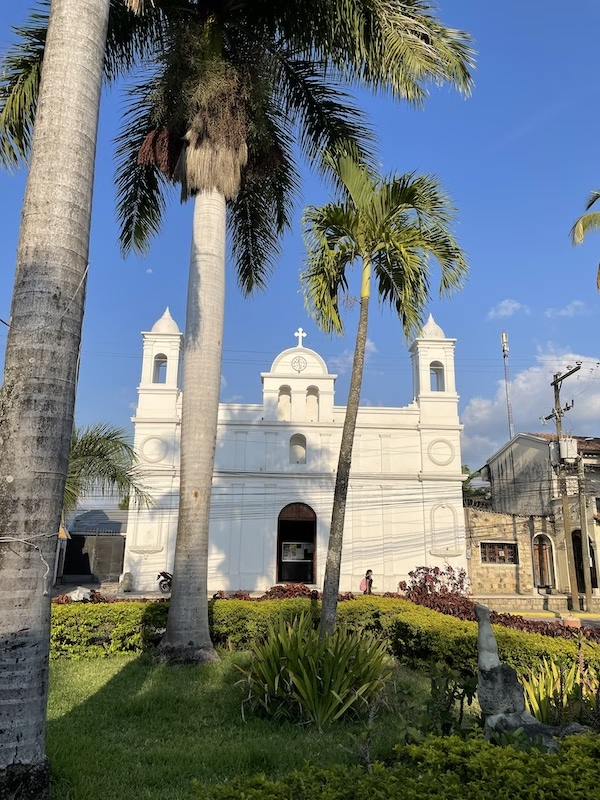
Things to Know About Copán Ruinas
The first thing you should know is that “Copán Ruinas” is actually the name of the town. The ruins are simply called “Copán.” Despite the fact that “ruinas” means “ruins” in Spanish. Also keep in mind that there’s a town in Guatemala called “Cobán,” with a “b” instead of a “p”. I sometimes wonder if they named things that way just to mess with us gringos.
Copán Ruinas, the town not the ruins, is located on the border between Guatemala and Honduras. A shuttle takes about 6 hours from Antigua, Guatemala, depending on how much time you need at the border. You can head onward from Copán to bigger cities in Honduras, or do what we did and go south to El Salvador.
Honduras has a pretty horrible reputation for crime. However, I felt completely safe in and around the town of Copán Ruinas. People were quite friendly and hospitable. You didn’t even see barbed wire around buildings or armed guards like you might find elsewhere in Central America. Everything was relaxed and lovely.
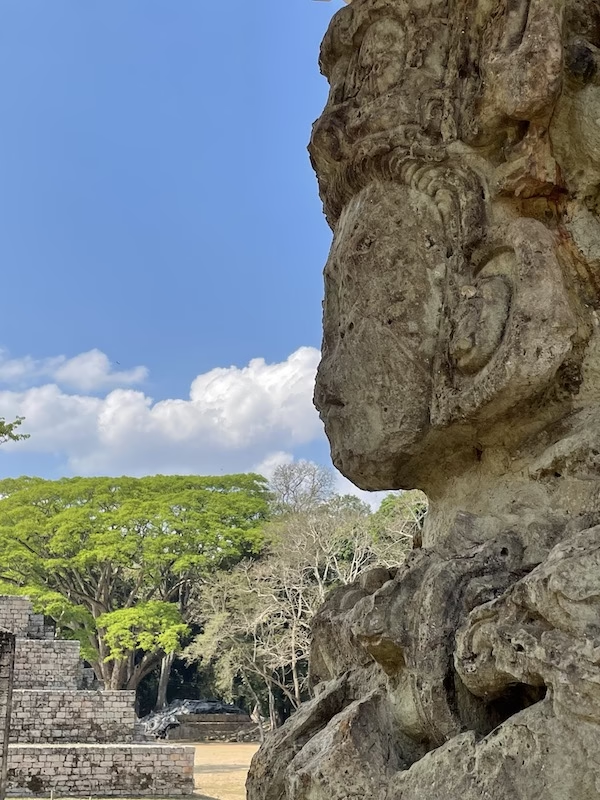
On one of the most fun, but also most stressful, aspects of travel is finding and booking places to stay. These days you have options ranging from dirt cheap hostel dorms to luxurious White Lotus style resorts. Thankfully, the internet is here to make finding accommodation easier.
Hostelworld is the go to app for finding hostels. For everything else, there’s Booking.com. If you book through either of the previous links, I’ll gain a small commission at no extra cost to you.
The Ruins of Copán
Copán, the ruins not the town, are one of the most important and spectacular ancient Mayan sights. Seriously. I’ve visited quite a few Mayan ruins in my day, and Copán is still one of my favorites.
You enter the ruins walking down a dusty trail through tropical dry forest. Scarlet Macaws call from the tree tops and swoop overhead. Then the forest opens up to reveal a field surrounded by ancient stone structures. Look closer, and you start to see the thousands of beautiful carvings that the ancient Mayan sculptures cut into the stones, on the sides of the pyramids and in rocks littering the ground.
The Mayans really were master stone carvers. Some of their best work is on display in Copán, including a series of magnificent stelae and a staircase filled with hieroglyphics telling the story of the ruling dynasty. There’s also that disembodied stone head. It’s all really fantastic.
And while Copán isn’t in the lush jungle, there’s still plenty of nature. There are the macaws soaring and squawking around, but we also saw mot mots and countless smaller birds. We got to see an agouti and an little armadillo shuffling through the leaves on the forest floor.
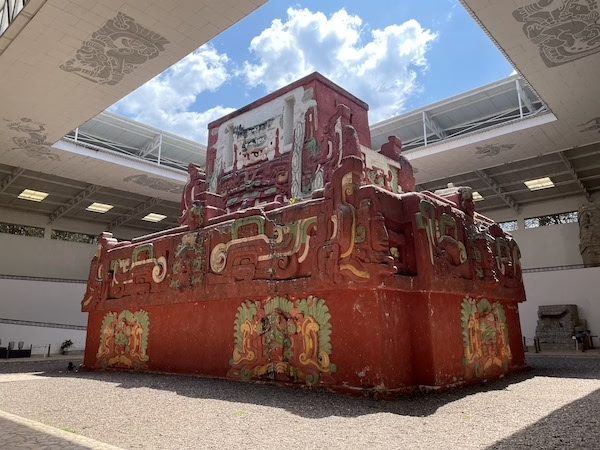
The onsite museum is also pretty spectacular. The museum has more stone carvings and information on Copán’s history. They also have a reproduction of the main temple, painted in bright red, green and yellow as it would have been during the height of the Mayan era. It really helps to spark the imagination and try to picture how things looked thousands of years ago when Copán was a bustling city.
If you want more information on the ruins at Copán, check out the Wikipedia page. It’s surprisingly detailed: https://en.wikipedia.org/wiki/Cop%C3%A1n PBS also has a website about Copán you can check out: https://www.pbs.org/wgbh/nova/maya/
The ruins are located about a kilometer from Copán Ruinas town. You can walk there easily enough, or take a taxi or tuk tuk if you’re feeling lazy. I recommend going in the morning when the wildlife is more active and it’s less hot. The tropical sun is strong and there isn’t a lot of shade. Make sure to bring sun protection and a lot of water.
The ruins at Copán were also surprisingly empty. Most other visitors we saw were local Hondurans. Perhaps Honduras’s reputation scares people away. It shouldn’t. The ruins here are a must see for anyone with even a passing interest in the ancient Maya.
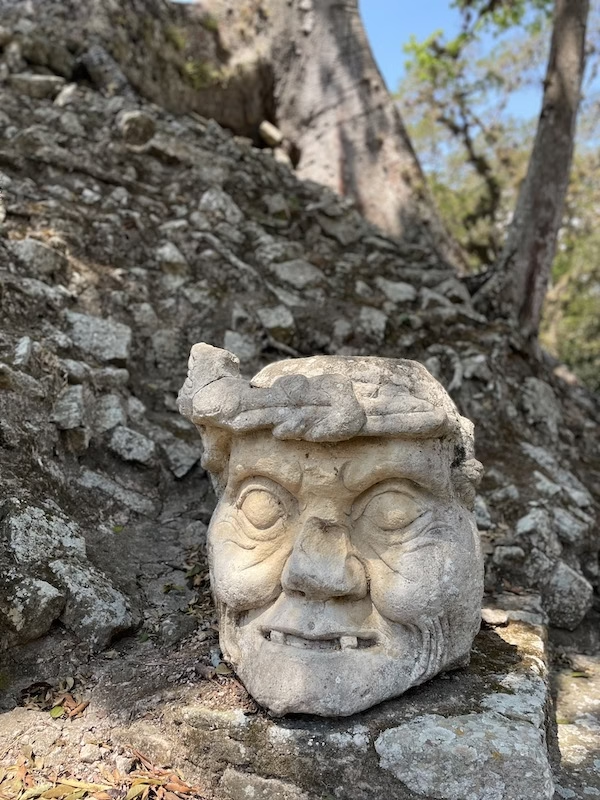
Things to Do in Copán Ruinas Besides Visiting the Ruins
If people come to Copán Ruinas at all, they often just go to the ruins for a day and then head back to Antigua or wherever else they’re going. This is a mistake. There are lots of other things to keep you busy in the town of Copán Ruinas when you’ve had your fill of looking at ancient stone carvings. We actually spent five nights here and still didn’t do it all.
Copán Ruinas is a nice place to spend an afternoon wandering around. There are plenty of restaurants where you can try local Honduran dishes (see below). The central park is also very lovely, with an old Spanish colonial church and macaw nests in the palm trees surrounding the square. The town has a laid back, cowboy sort of feel to it. It’s quite charming.
There are also a handful of paths leading out of town you can wander on. These pass by a few other Mayan structures that are scattered outside of the official ruins.
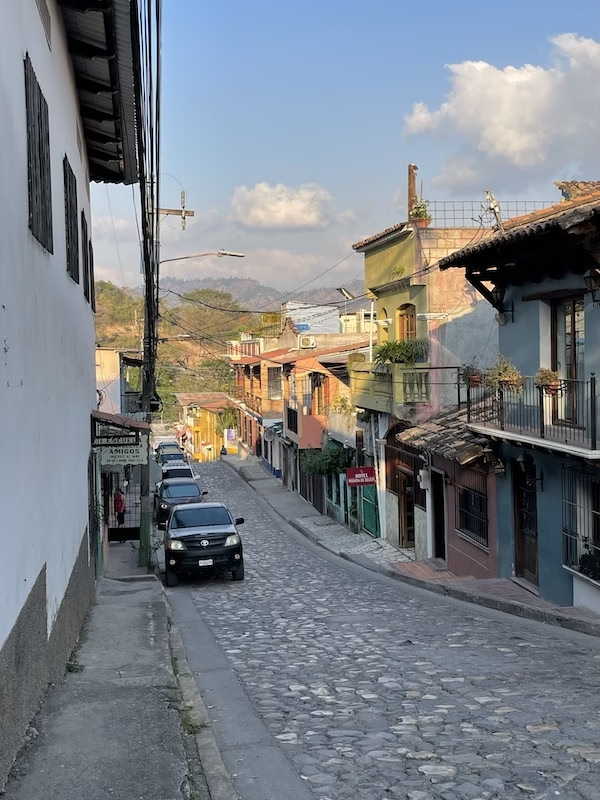
Tours are easy enough to arrange once you arrive, but if you absolutely must book in advance, I suggest using Get Your Guide. There are tons of tour options and they’re more reasonably priced than other online booking sites. Click on the following link and you’ll also be supporting this blog. Click here to explore tours in Copán Ruinas.
Visit Macaw Mountain
The Macaw Mountain nature reserve is the second most popular thing to do in Copán Ruinas next to the ruins. Macaw mountain is a preserve and rehabilitation center dedicated to, you guessed it, the mighty Scarlet Macaw. They also have toucans, parrots and other tropical birds.
Years ago, American and Canadian expats started flocking to the islands of Roatan and Utila off the coast of Honduras to live out their weird pirate fantasies. These wannabe Francis Drakes decided they needed a parrot on their shoulders to complete the pirate look, so they bought Scarlet Macaws and other parrots from illegal wildlife smugglers. But then, many of these modern-day wannabe buccaneers found they couldn’t cut it in paradise and returned back to their frigid homes in Northern North America. They left their poor pet birds behind.
The parrots and macaws were habituated to humans and couldn’t be rereleased into the wild. That’s where the founders of Macaw Mountain swooped in and started taking care of them. Eventually, they got too big to stay in Roatan island and moved to their current location near Copán Ruinas. Now, the reserve not only takes care of abandoned pet birds, but offers bird education programs, breeding programs and has been able to reintroduce flocks of macaws back into the valley surrounding Copán.
It’s a pretty cool place for anyone who is interested in birds. It also feels good to support a project that’s trying to do some good and helping out an endangered species. Especially a species as impressive as the Scarlet Macaw.
Macaw Mountain is located a short two kilometers from the Copán Ruinas central park. You can read more about them at their website here: https://www.macawmountain.org/en/home/
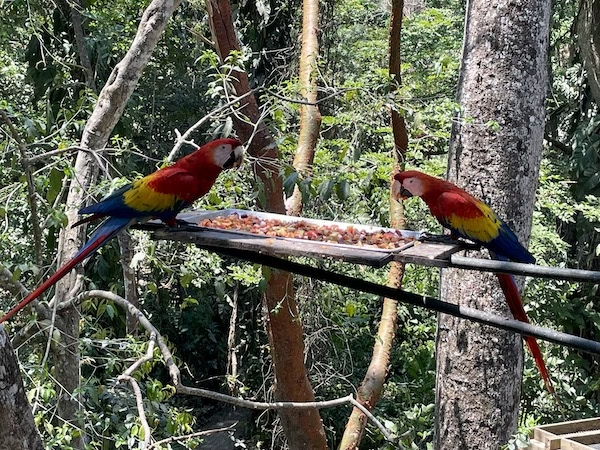
Go Horseback Riding
The rugged hills and cowboy vibe surrounding Copán makes it just the place for a horseback ride. We arranged a tour through our hotel, but there are options all over town. You can pretty much choose the amount of time and distance you want to go. The hills and forests around Copán are full of horse trails.
Our tour led us across a river, through the surrounding forests and hill sides and even to a small set of unexcavated Mayan ruins. If you look at the rocks just right, you can see the shape of a toad, a Mayan fertility symbol. We also visited a nearby, living, breathing modern Maya village where we got to see a local women’s weaving collective. I’m usually not a big horse guy, but I had a lot of fun.
The tour guide ended up being one of the more interesting people we’ve met on our travels. He and his son, an adorable but very serious nine-year old, picked us up and guided us around the area. It turns out this guy was just moonlighting as a guide. For a day job, he worked with archeologists helping to excavate and explore the nearby ruins.
He showed us some grainy video on his phone of the tunnels under the structures at Copán. He also told us about the time he helped discover the tomb of a previously unknown Mayan king.
So, yeah. We basically got a guided horseback tour from the Honduran Indiana Jones.
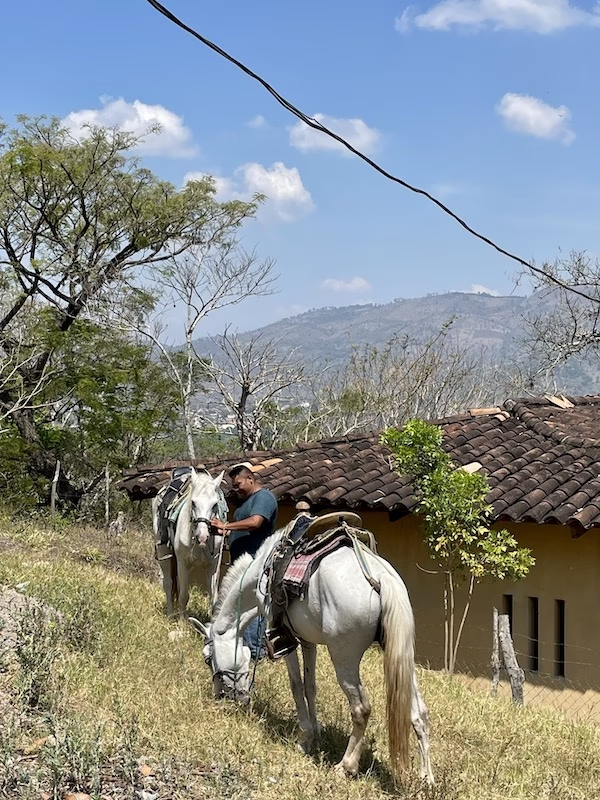
Eat Baleadas
If you’re wondering what Honduran Indiana Jones eats when he needs a break from delving deep into ancient ruins, it’s probably the humble baleada. Baleadas are made with wheat tortillas and filled with refried beans, cheese, cream and other toppings. They’re the national dish of Honduras, and worth a try whiel you’re visiting Copán Ruinas. Pretty much every restaurant sells them and they’re cheap and filling.
I’ve also heard rumors that there are other things to do in Copán Ruinas. There are supposedly some hot springs and a zipline nearby, if you’re into that sort of thing. There’s also a butterfly garden in town, but it was closed while we were there so we didn’t go.
We spent five nights here and basically only did three things. That should give you an idea of what sort of travelers we are. And Copán was the perfect place for slowpokes like us.
Beyond the ruins, Copán Ruinas offers a lovely cowboy ambience and a healthy dose of bird life, relatively free of tourist crowds. It’s a great stopping point between Antigua, Guatemala and Santa Ana, El Salvador. And it’s a fantastic spot for anyone with even a passing interest in ancient Mayan ruins and culture. Take a break for a few days in Copán Ruinas, you won’t regret it.
Where to Stay in Copán Ruinas
I had a lovely time at the locally owned, family run Hotel Brisas de Copán. The place kind of reminded me of an old North American motel, but in a charming way. The staff was very nice and helpful, and the hotel is right across the street from Copán’s best barber shop.
Click here to book your stay. If you use one of my links, I get a small commission at no cost to you.

